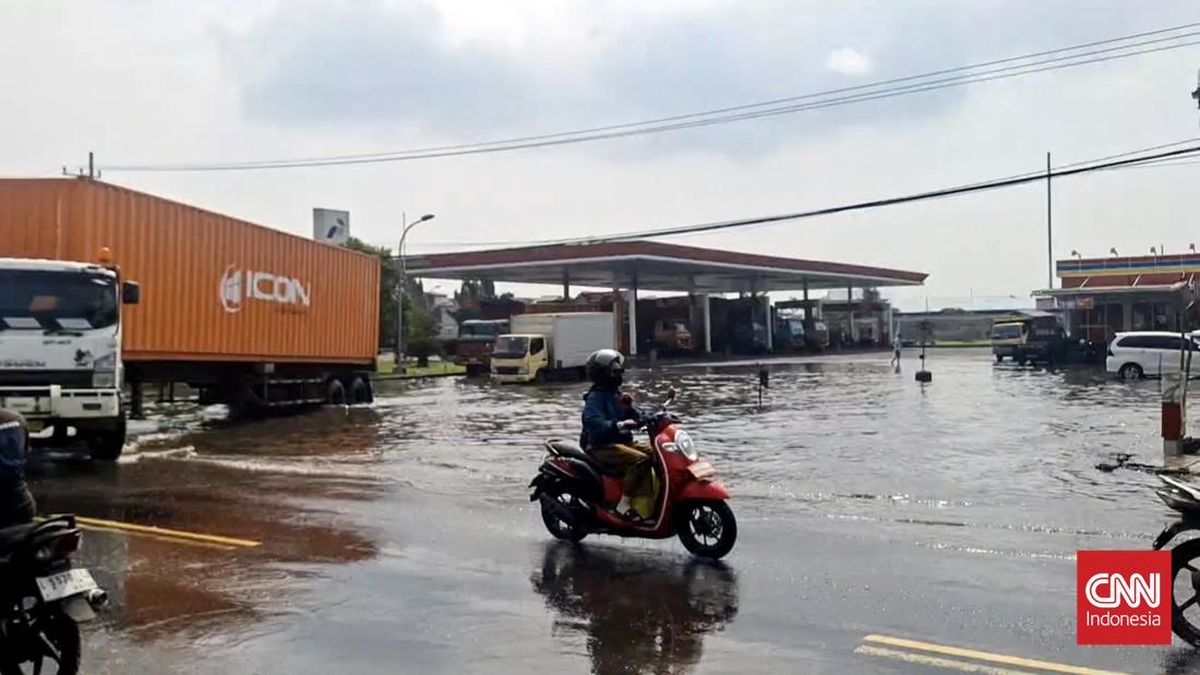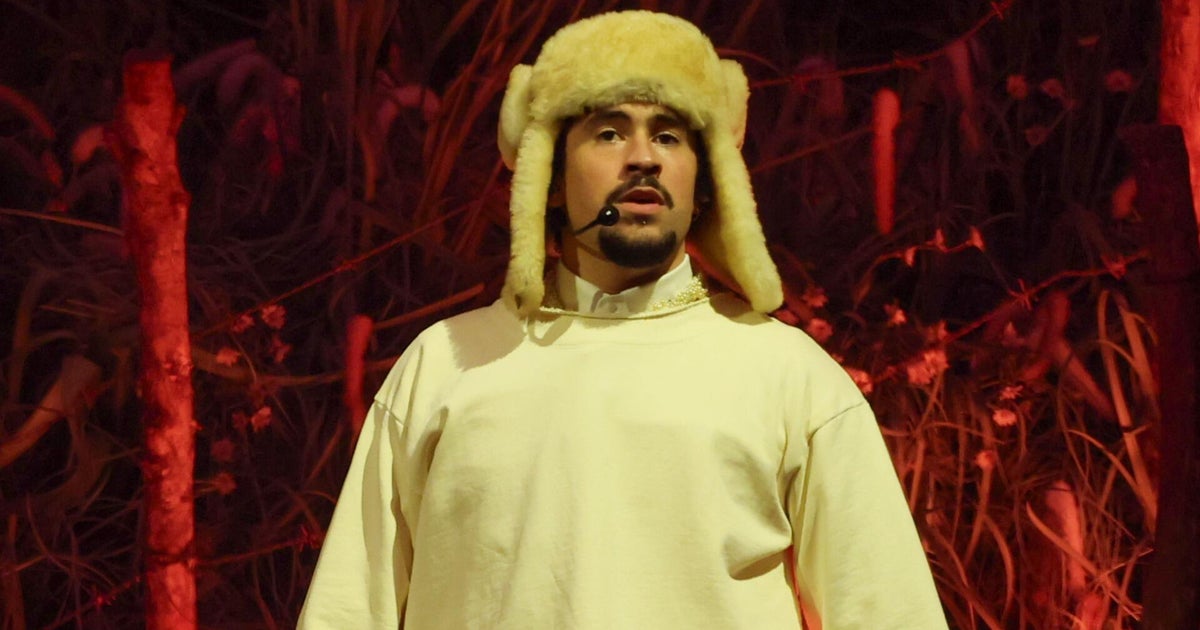At this year’s federal election, voters in the regional Queensland seat of Flynn were offered some electoral sweeteners.
Vote for Peter Dutton, and the Coalition would deliver a $28,500 toilet and shower block to the 170 residents of the town of Wowan.
Loading
Back Anthony Albanese, and Labor would spend $18,000 on new chairs for the village hall in Mondure, home to 102 people.
Toilet blocks and chairs do not feature in section 51 of the Constitution. But over the past decade, the federal government has extended its funding reach into areas that rightfully belong to local councils.
Since the 2019 election, the federal government has put money into 39 dog parks across the country – almost all in marginal electorates where canine-loving voters could swing the result.

Then oppostion leader Bill Shorten meets a democracy sausage dog during the 2019 federal election campaign. Promises for dog parks and toilet blocks have proliferated at federal elections, despite constitutional doubt over them.Credit: Alex Ellinghausen
Constitutional law expert Anne Twomey says the federal government exceeded its constitutional powers by funding chairs, toilet blocks, dog parks and netball court lights.
“A lot of what the Commonwealth does is clearly unconstitutional,” she says.
“[But] no one is going to bite the hand that feeds them. The High Court can’t be happy that this keeps on happening, and its rulings are ignored.”
The intervention of a federal political party in something as local as a toilet block goes to the problems at the heart of the federation – how decisions could be better made, whether taxpayers get value for money, if businesses are being held up in useless red tape, or if one level of government should be funding something at all.
Stick to your lane
A constant refrain, particularly from state leaders, is the way the federal government (and opposition) sticks its nose into areas that are clearly not national issues.
Nothing in the country’s rule book – the Constitution – gives the federal government scope for this.
When Tony Abbott announced his federation white paper in 2014, he made clear his desire for a simpler government arrangement.
“We need to reduce and, if possible, end duplication and make interacting with government simpler. We need to clarify roles and responsibilities for states and territories so that they are, as far as possible, sovereign in their own sphere,” he declared.
A week later, he was championing the federal government’s $50 million “safer streets” program – an election promise to pay for CCTV and street lighting around so-called “crime hotspots”. This was clearly a state issue.

Tony Abbott (centre) at a COAG meeting in 2015.Credit: Alex Ellinghausen
Within a year, a damning auditor-general’s report into the first steps of the crime program found “unsound” advice to the government, no real assessment of whether the money was going into crime hotspots, or if it was actually working. The government did not even know how many CCTVs it was buying.
Federal shadow treasurer Ted O’Brien said if each level of government knew its place, the federation would work better.
“Power has shifted to Canberra over time. That has led to an overlap in responsibilities and a bloating of bureaucracy, without giving the public a head to chop off if things don’t go as planned. It’s not clear who’s accountable for things,” he says.
Loading
Independent economist Chris Richardson says Australia would be “stunningly better off” if it drew clearer and simpler lines around responsibilities, even if it meant tossing a coin to determine which level of government should be in charge.
“Take the two biggest examples: education and health. You need just one level of government in charge. Maybe one does health, the other does education. But because their responsibilities overlap, they trip over each other left, right and centre,” he says.
“The Commonwealth wants to meddle in an area of state responsibility for any reason.”
Marion Terrill, infrastructure expertThe power imbalance between the states and Canberra permeates the public service as well as elected officials.
“The states are saying, ‘You need to give us more money and treat us like an adult,’ but the Commonwealth feels like it’s the top brass when it comes to public administration and the states are a bit second-rate, that they don’t know how to run things. There’s a bit of snobbery,” notes a former head of the Productivity Commission, Michael Brennan.
It’s not just running things. Building things is also an issue.
The states have been surprised to discover they have to match funding under the Albanese government’s Housing Australia Future Fund projects.
Previous federal governments have also put up money for major infrastructure projects – such as Melbourne’s East-West link and the Perth Freight Link – which the state governments at the time did not want.
Billions of dollars were put into the federal budget in anticipation of projects long since abandoned.
“We’ve got to this point that the Commonwealth wants to meddle in an area of state responsibility for any reason,” infrastructure expert Marion Terrill says.
Buy off the states
But states are damaging their own economies, and the national one, by failing to work together.
Loading
The Productivity Commission is in the middle of an inquiry into the web of differing – and often contradictory – state-based rules relating to occupational licensing. It estimates that aligning these rules would boost the economy across several industries by $846 million a year, with the electrical trades alone up to $62 million better off.
Current licensing requirements enable electricians in some states to install a split-system air conditioner as long as they have an “ARCtick” accreditation. But in others, the electrician must complete another full qualification – at a cost of up to $5000 – even if they have the ARCtick accreditation.
It causes all sorts of problems for electricians who might want to work between Victoria, NSW and Queensland, which have differing accreditation systems.
Little wonder that Treasurer Jim Chalmers, who directed the commission to conduct its inquiry, is hopeful of change that will save money for consumers and help workers move around the country.
He has also borrowed from the Keating government and its National Competition Policy regime, which John Howard continued into the early 2000s.
From removing shopping hour rules to ending a string of government monopolies, national competition policy increased the size of the economy by an estimated 2.5 per cent.
At the heart of the policy were payments – effectively bribes – for the states to take on changes that may hurt their fiscal or political bottom line but help move the economy forward.
“The WA GST deal … is rewarding the richest state, that’s been kissed on the bum by a Chinese rainbow, with more money so it derides the eastern states.”
Saul Eslake, economistThe first payments have already started flowing. Chalmers last month offered the NT government $1.2 million to reform its planning rules in a bid to make it easier for a supermarket chain like Aldi to establish itself in the Top End, competing against Woolworths and Coles.
It’s a small, cheap step that is very much in the spirit of the original national competition policy program.
Loading
Former Treasury secretary Ken Henry notes that getting co-operation between the Commonwealth and states invariably requires cash from Canberra.
“It’s simply being realistic to assume, I think, that something of that sort will be required,” he says.
Chalmers has established a $900 million productivity fund to encourage the states to take on reforms they would otherwise ignore.
“It’s actually a big thing,” the treasurer says, pointing to the fund, the regulatory agenda around the single economic market, and all the work on harmonising regulation, planning and approvals.
“If it was 30 years ago, this would more readily be recognised as being among the significant waves of federation reform.”
What is the Commonwealth Grants Commission?
The interest in – and early success of – the National Productivity Fund goes to an issue at the heart of the federation – the flow of tax dollars.
This is where Chalmers and Albanese, plus Opposition Leader Sussan Ley and Ted O’Brien, will ultimately find themselves in a truly horrendous political problem – the carve-up of the GST.

Western Australia’s iron ore effectively broke the GST allocation system - at a huge cost to the economy.Credit: Trevor Collens
This year, the GST will raise about $100 billion. The job of deciding how that money is shared between the states and territories is given to a tiny agency, the Commonwealth Grants Commission, housed within the federal Treasury.
NSW Premier Chris Minns almost tears out his hair trying to describe the process controlled by the commission, which he describes as effectively a law unto itself.
Every year, the commission uses a complex and opaque system to determine how much each state and territory will receive from the GST pool.
It considers everything from the cost of natural disasters to urban density to determine the funding needed for all the states and territories to provide similar levels of service to their residents.
Loading
It can lead to bewildering swings and roundabouts. Victoria, for instance, will this year receive an additional $516 million in GST to help cover the cost of providing public transport to its fast-growing outer suburbs. But it will lose $292 million because other states have suffered substantial natural disasters, requiring more GST support.
This is known as horizontal fiscal equalisation.
A key element of this concept is that financially stronger states support weaker ones. Until 2005, just one state, Victoria, had always needed to prop up less financially secure states.
This changed in 2005 when the mining boom kicked in. Victoria, with NSW, was joined by Western Australia as a so-called “donor” state.
But WA’s share of the GST pool collapsed under the grants commission’s methodology. The annual carve-up of the GST, which finances the federation and huge elements of state and territory services such as health and policing, eventually fractured.
It directly led to the Morrison GST deal that is now causing so much trouble to every state and territory bar WA, plus the federal budget.
According to Minns, the unelected members of the grants commission are now effectively telling the NSW government that it has the capacity to increase land taxes to make up for the shortfall it has received in GST.
That, the premier says, is not the role of three bureaucrats, a point made by almost every other state politician interviewed for this series.
Minns believes it might be time to “blow up” the commission and its processes.
Queensland Premier David Crisafulli notes that despite the amount of GST being collected going up by around $4 billion a year over the past two years, his state has lost about $2 billion of the tax.
The GST allocation system, he says, has “been pineappled”.
But others believe the commission is one of the secret success stories of federation.
Saul Eslake says that without the commission and horizontal fiscal equalisation, many Australians would be worse off.
“One of the things that makes Australia a much better country than the United States is that it doesn’t matter where you live, you will get quality health care, education, policing, environmental protection and the like,” he says.

Economist Saul Eslake is a critic of the GST deal.Credit: Alex Ellinghausen
“It’s not like the US, where there are very different outcomes if you’re in Louisiana or Connecticut, or if you’re in Canada and the difference between Newfoundland and Alberta.”
The GST review
The Institute of Public Affairs’ Daniel Wild says without changes to the GST allocation system, the federation is effectively doomed.
“I don’t think you can fix the federation without making changes to the way the GST system works,” he says.
The changes put in place by the Morrison government, and supported by the Albanese government, have not only imposed a huge cost on federal taxpayers – they have distorted a system already under immense strain.
Loading
NSW, Australia’s most populous state, is expected to receive $25.5 billion of this year’s GST pool. But if it received its population share, Minns would have $29.6 billion to invest in services.
Meanwhile, the Northern Territory government of Lia Finocchiaro will get $4.5 billion, or more than $17,600 per person. If the GST was allocated on a per capita basis, the territory would receive less than $1 billion.
Strident critic of the GST deal, Saul Eslake, says while West Australians may celebrate their financial windfall, it is doing immense damage to the rest of the country.
“The WA GST deal and the way it is rewarding the richest state, that’s been kissed on the bum by a Chinese rainbow, with more money so it derides the eastern states, that is risking the entire system,” he says.
The Morrison-era reforms included a requirement for a formal Productivity Commission review by the end of next year. Chalmers has bitten the bullet and the inquiry is under way.
In setting up the current arrangement, Morrison ignored a commission report that urged changes that would have caused financial problems for the NT, the ACT, Tasmania and South Australia. It also argued that there needed to be “a better-delineated division of responsibilities between the states and the Commonwealth and establish clear lines and forms of accountability”.
Similar recommendations from the Productivity Commission have to be on the cards.
WA treasurer Rita Saffioti is the only state leader adamantly in support of the GST deal, saying it ensures her state – which would otherwise only receive back about one-tenth of the tax it contributed – can fund its extensive transport needs.

WA premier Roger Cook and Treasurer Rita Saffioti are already planning to fight any changes to the GST system.Credit: Colin Murty
“The cost of delivering transport is very, very high, especially in regional WA, and transport is fundamental to productivity,” she says.
“If you can move grain faster to port in a particular window, the economic return is greater. The money from massive projects in Western Australia flow to the Commonwealth through company tax and mining and gas royalties, so a stronger WA economy helps the national economy.”
The federal government and opposition know that changes that might leave Western Australia worse off may kill their electoral chances at the next federal election due in 2028. But without change, taxpayers fork out more to prop up a system most politicians cannot explain.
COAG v national cabinet
In the decade before Federation, colonial premiers would meet – in part to discuss how the future Commonwealth would operate. These meetings would morph into what were called Premiers’ Conferences.
In 1992, the annual pilgrimage of premiers to Canberra was ended and replaced by the Council of Australian Governments (COAG), which included the state and territory governments and the Australian Local Government Association.
A small bureaucracy was built around the council to track the various promises participants made.
But COAG was a victim of the COVID pandemic, replaced by the much more secretive national cabinet. Today, national cabinet – which is supposed to meet four times a year, but last gathered in January – is the driving force of interrelated federal and state issues.
Angela Jackson, one of the three members of the panel that reviewed the federal government’s response to the pandemic, said the process worked initially.
“Without finding a way to get people to give up some of their control, some of their power, you’re not going to go far. We saw that with the national cabinet,” she says.

A meeeting of national cabinet in 2020 during the COVID pandemic.Credit: Alex Ellinghausen
“People worked together and gave up some power because there was a major issue in front of them. But since then, everyone has reverted to type,” she said.
Unlike COAG, where premiers and PMs often disagreed, the national cabinet was expected to act more like a traditional government cabinet – one where every member stood by all decisions.
Many believe it’s time for COAG’s comeback.
Constitutional law expert Anne Twomey thinks it could drive reform and ensure any changes work as expected.
“With an independent body back in place, you could improve the efficiency of the federation with money on the table to act as an incentive for legislative change and also track what is working and what is not,” she says.
Deloitte Access Economics lead partner Pradeep Philip says while COAG was not without its problems, it would reintroduce more objectivity, analysis and measurement of how taxes are spent.
Losing our standards
A sprawl of differing occupational licences in various states acts as a barrier to workers moving across the country. As well, a vast network of standards hinders the movement of goods and services into Australia.
In late 2024, Chalmers asked the Productivity Commission to examine how aligning Australian standards with those used overseas could save the country between $1.9 billion and $3.8 billion a year.
These are not huge numbers in an economy worth $2.7 trillion a year. But for those directly affected, it would be noticeable.

Even plans to standardise carpets have provoked anger from those with a vested interest.
There are currently 7519 Australian standards, of which 893 are embedded in some form of legislation. The Productivity Commission estimates 40 per cent of all Australian standards have been superseded, are obsolete or have been withdrawn.
Just a quarter of the standards are consistently implemented across the states, territories and Commonwealth.
Yet even where there are obvious benefits, those with a vested interest are standing in the way.
Loading
The Carpet Institute of Australia argued that adopting international standards could be a risk to local quality levels and compromise consumer safety.
Adopting overseas standards could undermine Australia’s ability to determine what is best for its economy and consumers, the institute said.
Unless there’s a spate of unreported carpet fires across the world or Australians use carpets in a way unlike any other part of the world, it seems a stretch to argue we need our own standards to protect Australia from imported carpets.
Productivity Commission chair Danielle Wood said it was “pretty wild” that a country of 27 million people had so many varying standards, regulations and environmental approval processes across the country.
“I think there is a really strong theme in economic reform, which is really about reducing internal barriers to trade,” she says.
The trouble with councils
The number of standards governing the country’s carpets is nothing compared to the rules and regulations overseen by the nation’s 538 local councils.
The current debate over the state of housing across the country, particularly the lively arguments between NIMBYs and YIMBYs, highlights the often-neglected importance of councils to the economy.
But the sizes – physical and financial – of those councils vary enormously.
The nation’s smallest council is Peppermint Grove Shire, on the Swan River in Perth’s wealthy eastern suburbs. It stretches over just one square kilometre, is home to some of the richest people in the country, and employs just 13 full-time staff.
On the other side of the continent, the largest local government, Brisbane City Council, is effectively a city state. At 1367 square kilometres, it is twice the size of Singapore.
It employs almost 9000 staff and is forecast to spend about $4 billion on services this year. Peppermint Grove will spend about $4.3 million.
Peppermint Grove’s shire president, Karen Farley, says it’s not true that councils like hers are anti-development, or that they don’t have the scale to deliver efficient services.
“My personal view is that smaller councils are better than larger ones, because we know the entire area,” she says. “If a ratepayer wants to come in and discuss something with staff, they’ll know them by name and there’s more accountability.”

Peppermint Grove – at one square kilometre it is the nation’s smallest council.Credit: iStock
In 2013, the then-state Liberal government attempted to rationalise the number of councils in Perth. Instead of 30 councils there would be 14 with Peppermint Grove merged with another seven to make a local government area of 100,000 residents.
It was similar in scope to the dramatic rationalisation of Victorian councils under then-premier Jeff Kennett in the 1990s, when he reduced the number from 216 to 79.
Barnett’s plan failed and Peppermint Grove survived.
Farley remembers the arguments proffered to support amalgamation, saying efficiency had little to do with a council’s size.
“The state government would have had you believe that we weren’t [efficient] because we were small, but our view has always been that we are because we are small,” she says.
In the case of Peppermint Grove, which covers just 13 leafy streets, small may be beautiful and efficient.
The fight put up by the shire, and many other Perth councils a decade ago, has meant local government reform has largely died in Western Australia. NSW also faltered with its own proposed changes to council boundaries under former premier Mike Baird.
The resistance to council mergers is just one example of the problem faced by anyone who wants to implement policy reform, let alone take on an issue as sprawling as federation.
Twomey, reflecting on the Albanese government’s problems introducing its superannuation taxation changes, says the response to a relatively modest reform was “close to unhinged”.

Angela Jackson, who reviewed the federal government’s response to the pandemic, says the federation influences everyone’s lives.Credit: Alex Ellinghausen
“In the times that we live in, people don’t have the courage to make big change. Even small change is very difficult,” she says.
S&P’s Martin Foo says the federation can “muddle along”, but it will come at a cost to our collective living standards.
Michael Brennan, who now heads the e61 think tank, says the federation’s enduring problem is that the different levels of government simply don’t understand each other.
After looking closely at how the federation worked under the extreme pressure of COVID, Angela Jackson offers both pessimism and optimism.
“Everyone knows what they have to do, but once they go into a room together, they baulk at it,” she says.
“At times, the federation and its issues can seem really theoretical, not part of a person’s lived experience. But it does touch on everyone’s lives.”
Part one: How Australia was set up to fail
Cut through the noise of federal politics with news, views and expert analysis from Jacqueline Maley. Subscribers can sign up to our weekly Inside Politics newsletter here.









































